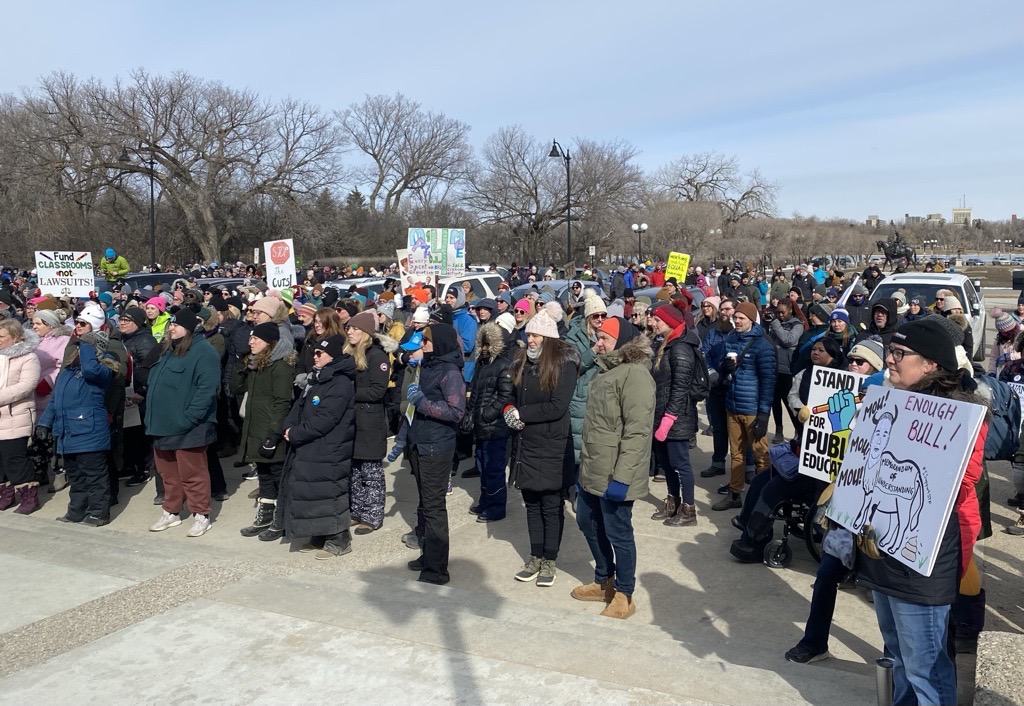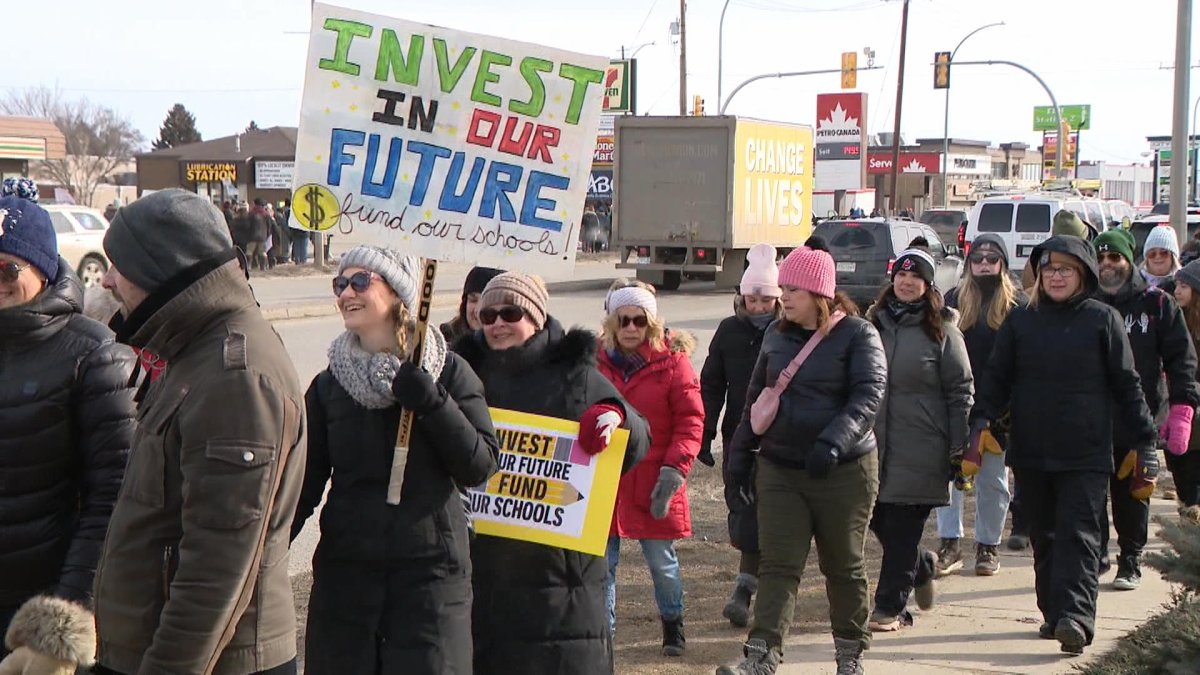Saskatchewan’s 2024-25 budget announced $8.8 million to start planning nine new schools for the province and two renovations.

The budget was announced Wednesday in the midst of teacher strikes across the province. Thousands of educators from several divisions gathered around the legislature in protest. Others marched up and down 8th Street in Saskatoon.
The government announced the $8.8 million will support planning to replace Minahik Waskahigan High School in Pinehouse and renovate South Corman Park School and Swift Current Comprehensive High School.
New schools in planning are:
- a Regina East joint-use elementary school for a public and Catholic school
- a Regina East joint-use high school for a public and Catholic school
- a Saskatoon East joint-use elementary school in Brighton for a public and Catholic school
- a Saskatoon East joint-use high school for a public and Catholic school
Projects will also continue in the communities of Balgonie, Carlyle, Saskatoon, Regina, Prince Albert, Moose Jaw, Lanigan, La Loche and Wilcox, including the construction of new Kindergarten to grade 12 schools, replacements, consolidations and renovations.

Get breaking National news
The government is also investing $28.5 million in relocatable classrooms and including $12.8 million for minor capital renewal projects which will allow school divisions to complete current repairs and renovations.
Ongoing capital renewal projects that fall under this portion of the budget include providing a new gym for Moswakanisihk Community School, a new roof for Waldheim School and renovation projects at St. John Community School in Prince Albert, Kyle Composite School, Medstead Central School and École St. Margaret in Moose Jaw.

$216 million from the budget will provide “safe and inclusive” learning environments for kindergarten to grade 12 students around the province according to the budget.
Due to the ongoing teacher sanctions around the province, the provincial government decided to announce a record investment into the budget in early March — an increase of $180 funding increase for school operating funding.
The increase brings the total operating budget to $2.2 billion for the 2024-25 school year, an increase of 8.8 per cent over last year.
Teachers say it still isn’t enough.
“To maintain per-student funding at the 2015-16 level, per-student spending would need to increase by another 12 percent, which translates to an additional $268 million on top of the already announced $180 million,” read an email statement from the Saskatchewan Teacher’s Federation (STF).
The increase includes:
- $35 million to support next year’s enrolment growth
- $8.6 million for classroom supports
- $66.6 million to fund the Teachers’ Collective Bargaining Agreement
- $29.8 million for inflationary pressures
- $40 million in annualized funding from the 2023-24 school year for classroom supports and enrolment growth
“These are the funds intended to address critical class size and complexity issues, but this budget line is currently unrestricted,” STF said. “This means that school boards can choose to use these funds for other purposes, such as servicing debt, instead of being used to assist students with their learning needs.”
The federation also noted that there is no guarantee this year’s funding increases will continue in non-election years.
“The government doesn’t want to commit to anything to make sure our kids experiences will improve,” said STF president Samantha Becotte.
Lee Barber, grade 7 – 9 teacher at Indian Head High School said class complexity is the hardest obstacle to tackle in his first year of teaching.
“It’s ranging abilities, a range of ways to learn and it’s really hard to adapt to every student in a given classroom. Even just with 25 (students), it’s quite a bit for me to go home and adapt every single assignment for them.”
Barber stood outside the legislature Wednesday to fight for his students.
“Having a livable wage and adapting to our economy is important but it’s more important that we are comfortable in our position of work.”
The STF called on the government Thursday to “agree to binding arbitration to address the contentious issues of class size and complexity.”
Binding arbitration would involve a submission of the dispute to a neutral party, which would provide recommendations to the province and the union.
“Government made a significant compromise to get to a deal and then for the teacher’s federation to not even stay long enough at the bargaining table to hear that full offer being expressed, that’s disappointing,” Saskatchewan Education Minister Jeremy Cockrill said after the budget announcement Wednesday.
He said it was unfair of STF to offer binding arbitration as the only option.
“Especially when they have only been at the bargaining table for 30 minutes in the last five months. I think that’s a really poor effort quite frankly,” he said.
Cockrill said members of the STF need to contact their union leadership and encourage them to get back to the bargaining table.








Comments